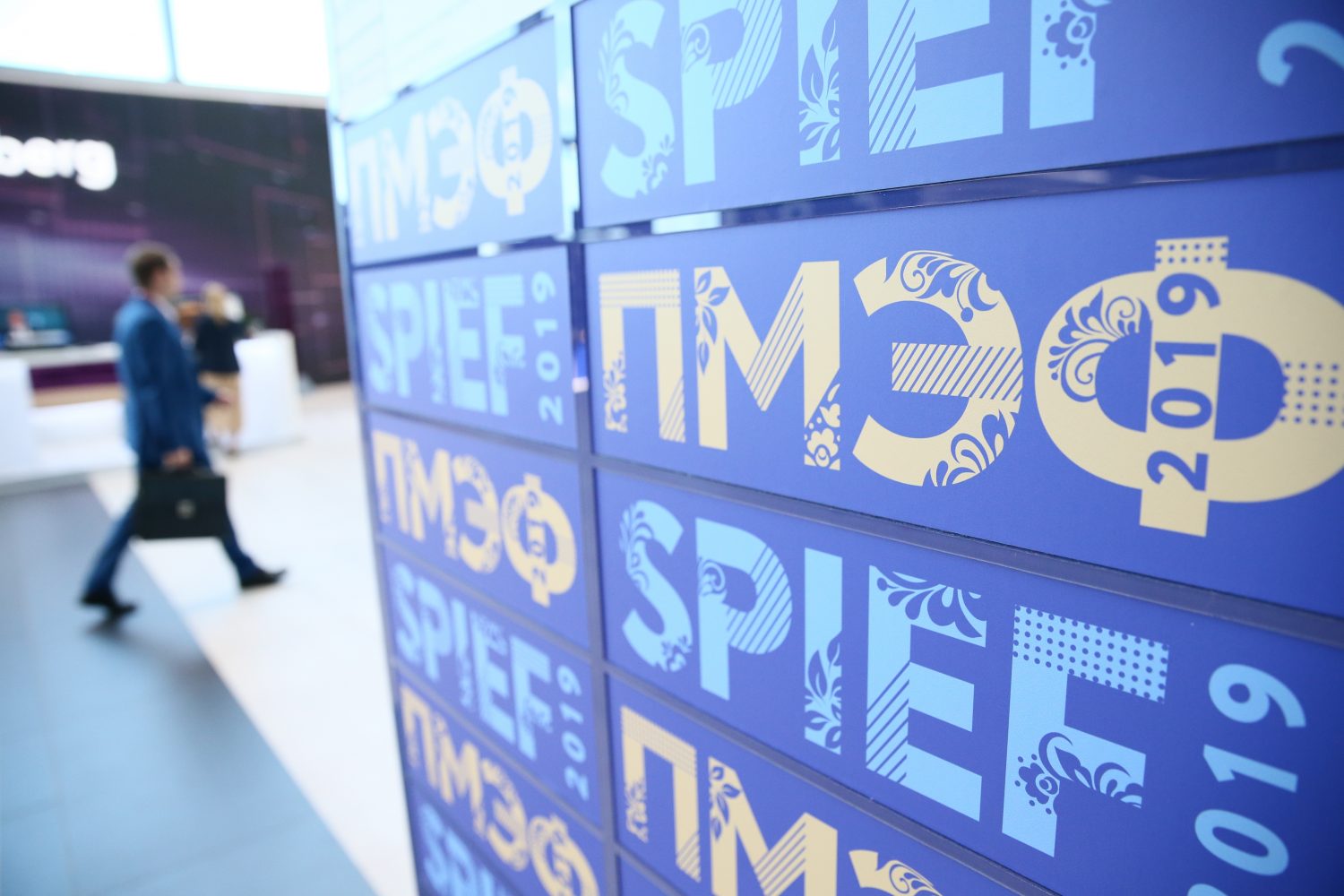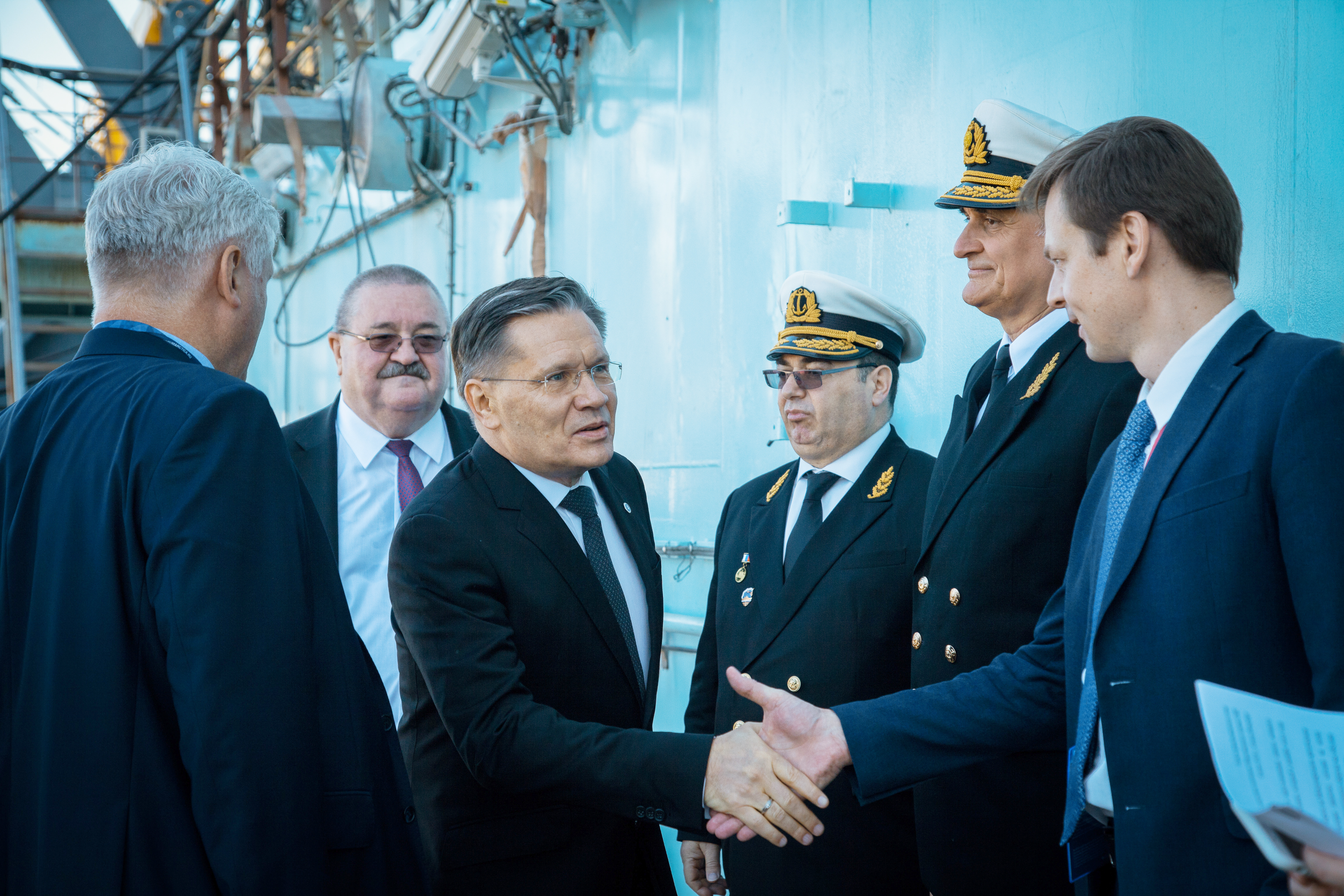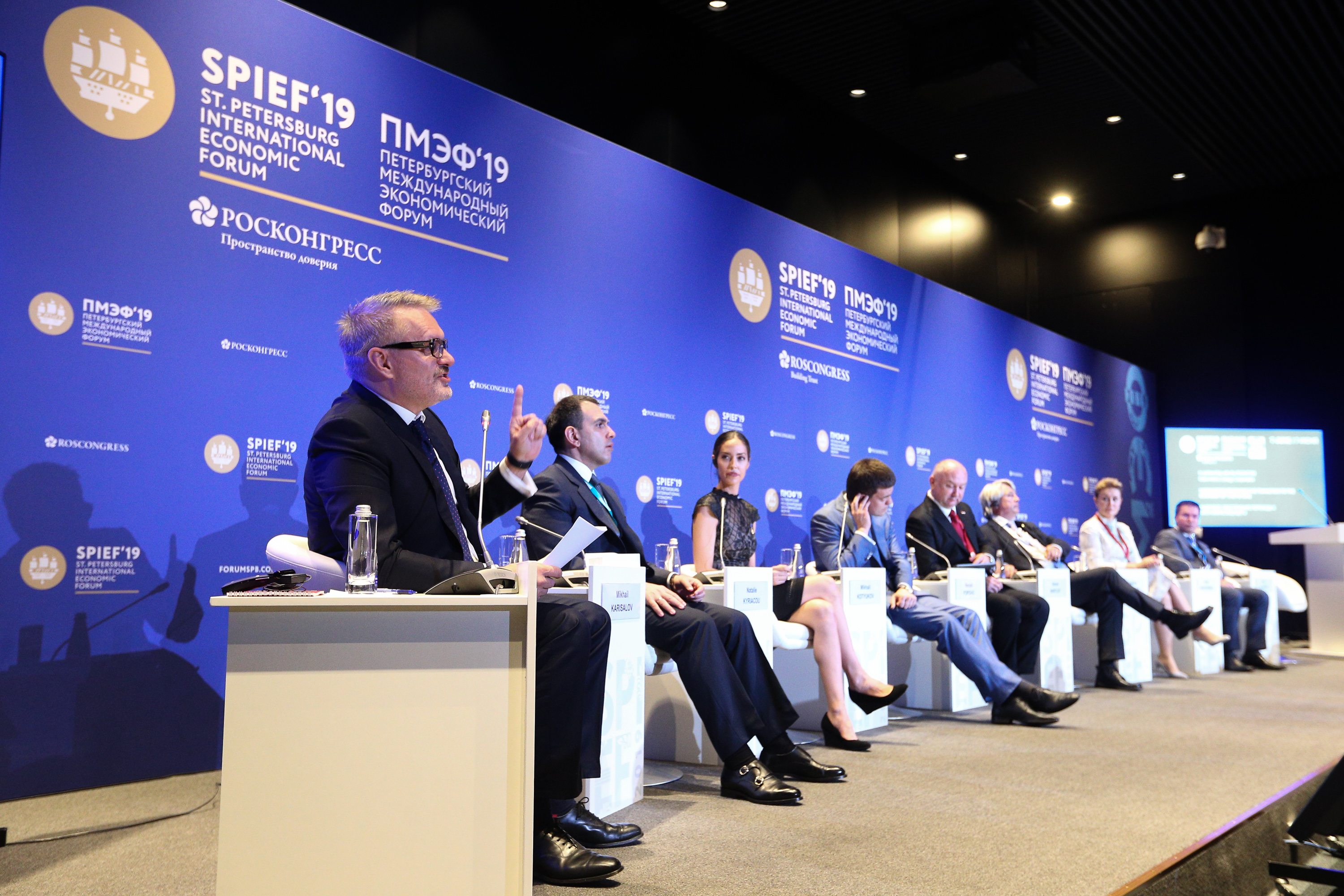
SPIEF 2019: Highlights from the Forum
back to contentsFor the Benefit of the People
Rosatom is working consistently to improve the infrastructure of nuclear towns since their sustainable development is seen as one of the company’s priorities. At SPIEF 2019, Rosatom signed agreements with Udmurtia and Obninsk. The first agreement is made to improve water supply in the nuclear town of Glazov (with USD 18.65 million to be invested over 2019–2024 in the construction and retrofit of water supply systems). The second agreement aims at improving utilities (water, heat and sewerage) in Obninsk (Kaluga Region).
For the Benefit of Arctic
Rich in gold, oil and natural gas reserves, the Arctic region is crossed by the Northern Sea Route, the shortest way between Northern Europe and Eastern Asia. In 2018, cargo traffic on the Northern Sea Route (NSR) reached 20 million tons. As an NSR infrastructure operator, Rosatom set a goal of increasing annual freight traffic to 92.6 million tons by 2024 and 110–120 million tons in the 2030s. In the coming years the company will receive three new powerful Project 22220 icebreakers – Arktika (Arctic), Sibir (Siberia) and Ural (Urals). Preparations are now underway to tender out contracts for the construction of the fourth and fifth Project 22220 icebreakers. The total price of the contracts is USD 1.58 billion.

On SPIEF sidelines Rosatom and VTB Bank signed an agreement for the cooperation in Arctic projects. The document provides for joint efforts to establish safe navigation, increase cargo traffic on the Northern Sea Route, and offer a range of financial services to NSR stakeholders. Another agreement made between VTB and Rosatom sets out the parties’ intentions to jointly finance projects of the Russian nuclear corporation. These include design and construction of large and small nuclear power reactors, development of new materials and solutions for power systems of the future, and other areas of technology. “Rosatom is working on a number of new designs for small and medium nuclear reactors. This is one of the most promising segments of the nuclear power industry,” Rosatom’s Director General Alexey Likhachev said.
Another NSR development agreement was signed at SPIEF between Rosatom, Nornickel, a leading global producer of palladium and nickel, and DP World, one of the world’s largest port operators based in Dubai. The parties will examine and select the best commercial options of using the NSR. They will also consider the opportunity to set up a partnership (a joint venture) to facilitate cargo traffic on the NSR. “Rosatom and Nornickel have been business partners for many years. Nuclear icebreakers operated by Rosatom’s subsidiary Atomflot convoy most of the ships carrying cargo for Nornickel. Our current task is to increase cargo traffic on the Northern Sea Route,” Alexey Likhachev commented.
The First Ore Mining Company (part of Rosatom’s Mining Division) and Finnish mining and metallurgy machinery supplier Outotec signed an agreement for the cooperation in developing the Pavlovskoye lead-zinc deposit on the Arctic archipelago of Novaya Zemlya. The plan is to build the northernmost mining and processing facility to produce lead and zinc concentrates. The project will have a capacity of 3.5 million tons of ore per annum and be operated by the First Ore Mining Company. Outotec will contribute its expertise in finding innovative solutions and technology for the Pavlovskoye project. The First Ore Mining Company also signed a memorandum of understanding with the Moscow-based Zyfra Group. The parties will consider the possibility of implementing the Digital Mining project for robotic automation and mining machinery remote control at the Pavlovskoye deposit.
For the Benefit of the Environment
Rosatom will commission seven hazardous waste treatment facilities in Russia by 2024. The first four facilities will be established at the plants that used to destroy chemical weapons. The other three will be built from scratch. Project costs are estimated at USD 568.9 million. The government will provide 48% of this amount, with the rest to be financed by investors, including PromSvyazBank that signed an agreement with Rosatom at SPIEF. The purpose of this agreement is to cooperate in the implementation of the Hazard Class I and II Waste Management Infrastructure federal program.
Focusing on High Tech
Digitalization tasks set by Rosatom for 2019 include introduction proprietary digital solutions, bringing new digital products to the market, and creating cross-cutting technologies for digital transformation of the Russian economy. In order to promote digital economy in Russia, Rosatom and Rostelecom, the country’s largest provider of digital services, signed a memorandum of cooperation. “We discussed an end-to-end approach covering a wide range of issues, such as reliable digital infrastructure, digital safety, innovative applications for digital transformation, and joint testing of future technology,” Alexey Likhachev commented on the memorandum.
Russia’s largest financial institution Sberbank signed a strategic cooperation agreement with Rosatom to make business processes more efficient thanks to innovative technology. Some of the examples include the Internet of Things, artificial intelligence, virtual and augmented reality, robotics, cybersecurity, blockchain, gamification, etc. Sberbank will also continue participating in Rosatom’s projects, raising finance for them and providing other financial services.
Focusing on Goals
The strategic – and most ambitious – goal for Rosatom’s TVEL Fuel Company is to achieve a several-fold increase in non-nuclear revenue by 2030. The company plans to reach it through cooperation with local R&D institutions and manufacturers. At SPIEF, TVEL and Krasnoyarsk Krai signed a roadmap for cooperation. It provides for the collaboration in 3D printing and additive technology to create new materials with unique physical and mechanical properties in association with Magnetic Hydrodynamics RPC, Reshetnev Siberian State University of Science and Technology, Siberian Federal University, Information Satellite Systems, and other local organizations. Discussions are underway to establish a center of excellence for additive technology.
TVEL and Hermith GmbH, a major European titanium supplier, agreed to set up a joint venture in titanium alloy production. The new company will specialize in high value-added products for knowledge-intensive sectors, such as aircraft, automobile and medical industries. In the first phase, the company will produce titanium wire for 3D printing and seamless pipes for aircraft hydraulic systems. After that, the product range will be expanded to include aircraft fasteners, titanium springs for cars, implant blanks, superconducting materials, etc. “TVEL’s subsidiary Chepetsk Mechanical Plant accounts for over 25% of TVEL’s ‘non-nuclear’ revenue, which amounted to RUB 13.5 billion (USD 215 million) in 2018. The agreement with Hermith paves our way to new markets of high added value titanium products,” TVEL President Natalia Nikipelova said. Cooperation between TVEL and Hermith GmbH started in 2016 when a large contract for the supply of titanium products from Chepetsk Mechanical Plant to the European market was signed.

For the Benefit of Children
There was much talk on the SPIEF sidelines about popularizing science among children and students. TVEL and Kurchatov Institute made an agreement to cooperate in creating a chain of school tech parks. The parties will develop a concept of the curriculum for school tech parks in TVEL’s host towns (Glazov, Novouralsk, Seversk, and Zelenogorsk) and a model of their cooperation with the children’s tech park at Kurchatov Institute in Moscow. “The School Tech Park project is gaining momentum in TVEL’s host communities. These tech parks offer 68 educational programs covering over 3,000 people annually. In 2018, we have launched three new laboratories specializing in programming, composite materials, and drone engineering. Technologies and equipment are growing more complicated, and children in local communities need advanced training courses,” Natalia Nikipelova said.

Focusing on Health
Along with many other products, Rosatom manufactures equipment and isotopes for nuclear medicine and research. At SPIEF 2019, Rosatom and the National Medical Research Center for Radiology with the Russian Ministry of Health signed a memorandum of cooperation. The document establishes plans to carry out joint clinical research of radioactive isotopes and medical equipment for nuclear medicine and medical radiology. The plan is to develop new cancer treatments and application guidelines. “We have been cooperating with Rosatom for several years. The result is a number of breakthrough achievements, such as the use of Russian-made iodine-125 in brachytherapy and yttrium-90 based microspheres for radioembolization of liver cancer,” Andrey Kaprin, General Director of the National Medical Research Center said.
SPIEF hosted the first meeting of the Northern Sea Route Public Council. The meeting was attended by 22 people representing R&D institutions, federal executive and legislative authorities, governments of Russian Arctic communities, businesses, NGOs, and international organizations. The proposal to establish a public council was made by Rosatom in April. It will become a venue for experts to deliberate on the NSR development.




